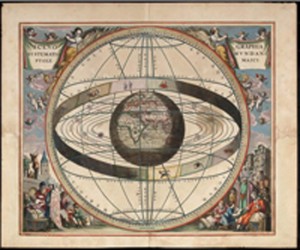If you needed a great opening scene for a movie…

…(Slightly blurred soft focus view of a book-laden study, the papers of research strewn over a busy desk) Several wizened gray-haired professors mull over ancient texts, trying to explain the many enigmatic references to a wondrous device, perhaps created by Archimedes himself, employing technology centuries ahead of its time, its blueprints lost forever in the conflagration of the Library of Alexandria in 48 BC. What was it? Could it provide a vital clue to many unsolved antediluvian mysteries? Why have we never found one? (Fade out)
(Flashback to circa 85-60 BC) An ancient Roman merchant ship carrying the spoils of war from conquered Greece tosses in the heaving Aegean Sea. In its hold, among the large statues, coins and precious jewels, sits a simple crate, containing what the crew no doubt considers nothing more than a mere mechanical plaything valued more for its bronze content than anything else. The raging tempest and the heavy freight prove a deadly combination for the vessel’s 100 year-old timber and the transport, its cargo and all hands perish into the realm of Neptune. (Fade out into the rain)
(Dissolve into the rain of 1901 AD) Another storm brews on the horizon, but this time the ship’s captain shows patience, deciding to wait for more favorable weather. Instead, he and his crew spend their idle time using modern diving suits to plunge for sponges. In the process, they discover an antiquated wreck of unknown origin filled with precious treasure – and one box of encrusted machine parts. They toss the box aside and delve into the priceless trinkets. (Fade out amid jubilant sailors.)
(Return to modern times) Scientists now believe the Antikythera Mechanism may represent the world’s first analog computer. The machine contains dozens of triangular teethed gears and appears to perform extraordinarily accurate calculations to determine the position of the sun, moon, possibly the planets and even the stars. It not only predicted solar eclipses, but also divided the calendar into the four-year cycles of the Olympiad. Most curiously, the Antikythera Mechanism mimics the complexity of clockwork not designed in Western Europe until a millennium later. What did the ancient Greeks use this object for? Sorry, but you’ll have to wait for the sequel. Scientists have yet to identify its true use with any certainty.

Leave a Reply